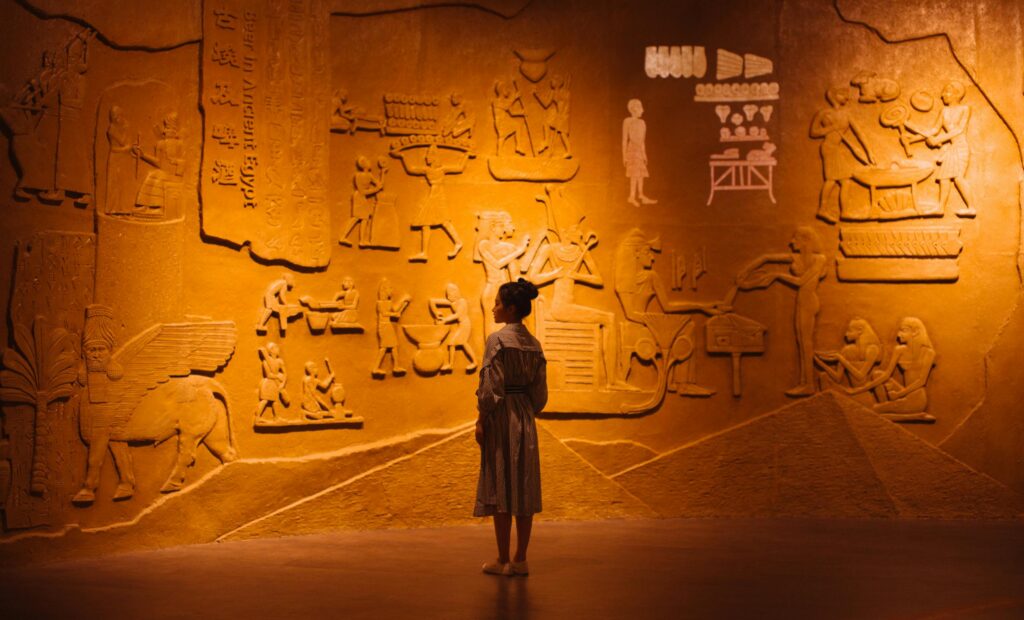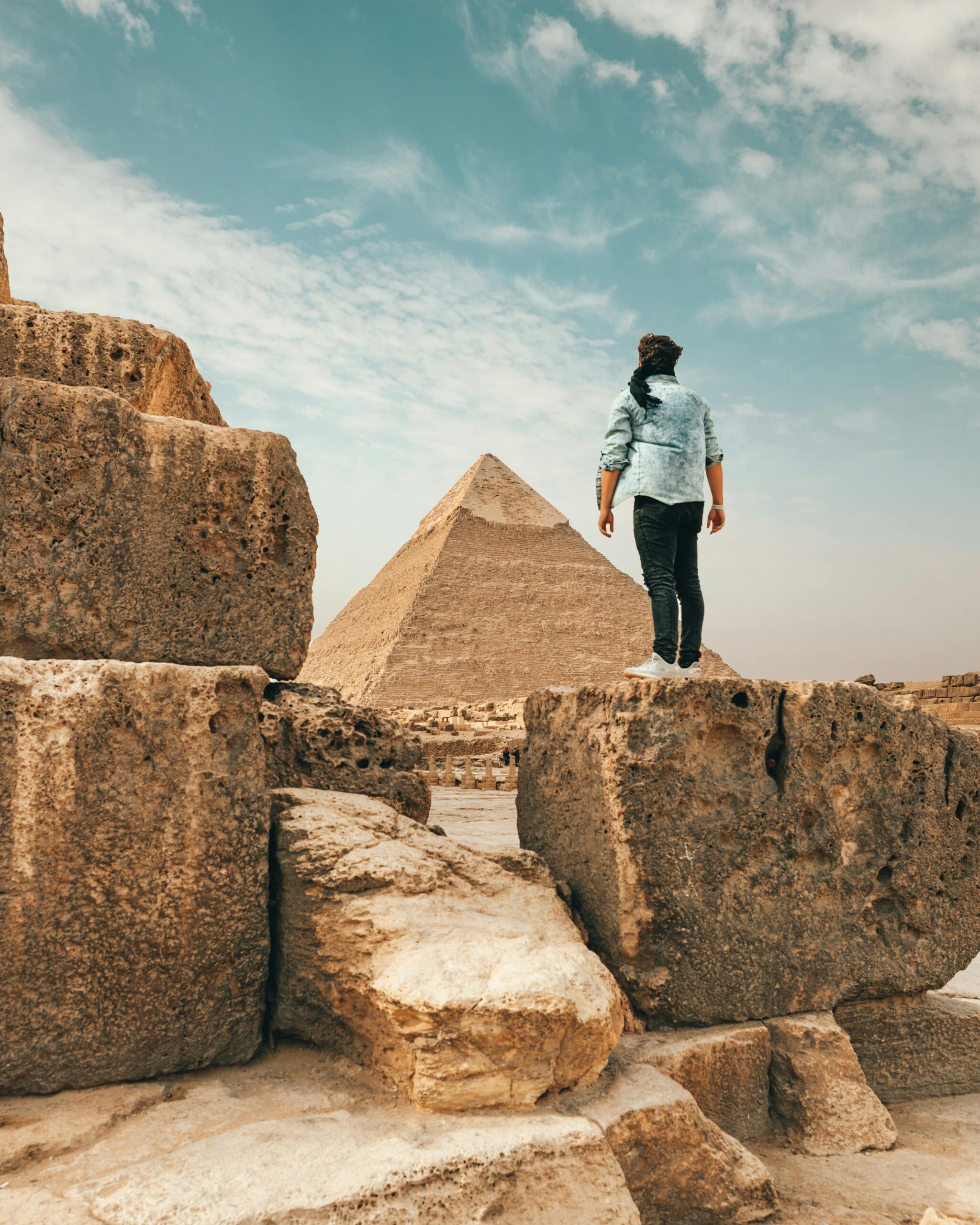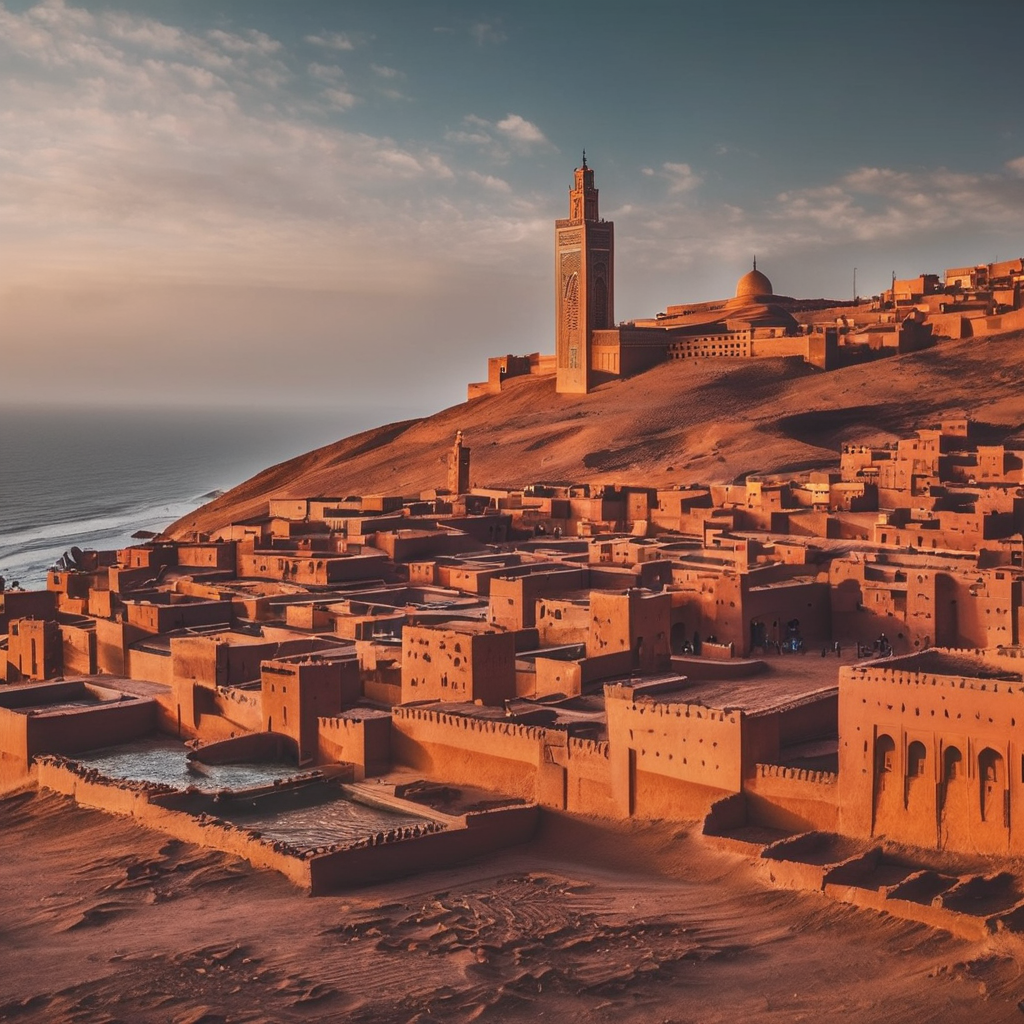Ancient ruins stand as silent witnesses to the grandeur of bygone civilizations, whispering tales of triumphs, mysteries, and tragedies. The allure of exploring these remnants of history transcends borders and time, captivating the imagination of travelers and historians alike. From the majestic pyramids of Egypt to the enigmatic stone circles of Stonehenge, each ancient ruin holds within its weathered stones a fragment of humanity’s collective story. Join us on a journey through time as we embark on an exploration of ancient ruins, delving into the depths of history to uncover the secrets of our ancestors.
Intriguing Architectural Marvels
Exploring ancient ruins unveils a tapestry of architectural marvels, captivating the imagination with their sheer grandeur and intricacy. From the towering pyramids of Egypt to the elaborate temples of Angkor Wat, these remnants of bygone civilizations stand as testaments to human ingenuity and craftsmanship. Each structure bears unique characteristics reflecting the cultural, religious, and technological advancements of its time. The precision in construction, use of innovative materials, and sophisticated engineering techniques employed by ancient builders continue to astound modern architects and historians alike.
Unraveling the Secrets of Lost Civilizations
Behind the weathered stones and crumbling facades lie the enigmatic secrets of lost civilizations waiting to be unearthed. Archaeologists painstakingly excavate these ruins, piecing together fragments of history to reconstruct the lives and societies of ancient peoples. Through deciphering inscriptions, analyzing artifacts, and employing cutting-edge technologies like LiDAR and ground-penetrating radar, researchers delve into the mysteries of the past. Each discovery offers a glimpse into the social structures, belief systems, and daily rituals of civilizations long forgotten, enriching our understanding of human history and evolution.
Archaeological Significance
Ancient ruins hold profound archaeological significance, serving as windows into the past and repositories of cultural heritage. These sites provide valuable insights into the development of human civilization, offering tangible connections to our ancestors and their way of life. Preservation efforts aimed at safeguarding these archaeological treasures are paramount, ensuring that future generations can continue to learn from and appreciate their cultural legacy. By studying ancient ruins, archaeologists not only unravel the mysteries of lost civilizations but also contribute to the preservation and interpretation of our shared human heritage.
Planning the Trip
Embarking on a journey to visit ancient ruins requires careful planning and consideration. Begin by researching the destination, learning about its historical significance, and identifying specific sites of interest. Consult travel guides, online resources, and reputable tour operators to gather information on transportation options, accommodation, and entry requirements. Consider factors such as weather conditions, peak tourist seasons, and any cultural events or festivals that may enhance your experience. It’s essential to create a flexible itinerary that allows ample time for exploration and discovery while also accounting for unforeseen circumstances. Whether traveling solo or with a group, ensuring you have necessary supplies, such as water, sunscreen, and comfortable footwear, is crucial for a safe and enjoyable journey.
Immersing in the Historical Ambiance
Visiting ancient ruins is a journey back in time, immersing oneself in the rich tapestry of history and culture. As you wander through the labyrinthine corridors and towering structures, let your senses absorb the sights, sounds, and textures of antiquity. Take time to marvel at the intricate carvings, ornate architecture, and the sheer magnitude of these ancient marvels. Capture the essence of the past through photography, sketching, or journaling, preserving memories that will last a lifetime. Engage with local guides or audio tours to gain deeper insights into the historical significance and legends surrounding each site. Allow yourself to be transported to a bygone era, where the echoes of ancient civilizations resonate through the ages.
Understanding the Cultural Context
Beyond their architectural beauty, ancient ruins are windows into the cultural context of their creators. Delve into the historical background, mythology, and societal norms that shaped these ancient civilizations. Explore nearby museums, interpretive centers, and archaeological exhibits to enhance your understanding of the artifacts and relics unearthed from the ruins. Engage with local communities and indigenous peoples to learn about their perspectives on the significance of these sites and their efforts towards preservation and conservation. Respect cultural sensitivities and adhere to designated visitor guidelines to ensure a mutually enriching experience for both travelers and host communities. By embracing the cultural context surrounding ancient ruins, you deepen your appreciation for the interconnectedness of human history and heritage.

Planning the Trip
When setting out to visit ancient ruins, meticulous planning can transform your journey from ordinary to extraordinary. Start by researching your destination, identifying the specific ruins you want to explore, and understanding their historical significance. Consider factors such as the best time to visit, weather conditions, and any entry requirements or permits needed. Look into transportation options, whether it’s renting a car, joining a guided tour, or using public transportation. Booking accommodations close to the ruins can save time and enhance your experience. Additionally, packing essentials like water, snacks, comfortable walking shoes, sunscreen, and a camera ensures you’re prepared for a day of exploration. Flexibility in your itinerary allows for unexpected discoveries and memorable experiences along the way.
Immersing in the Historical Ambiance
Visiting ancient ruins is akin to stepping back in time, immersing yourself in the historical ambiance of bygone civilizations. As you walk among the remnants of ancient structures, let your senses absorb the atmosphere, sights, and sounds of antiquity. Take time to appreciate the craftsmanship, architectural marvels, and intricate details that tell the stories of the past. Consider joining guided tours or audio guides to gain deeper insights into the history and significance of the ruins. Capture the essence of your experience through photography, sketching, or simply soaking in the surroundings. Allow yourself to be transported to another era, where the whispers of history echo through the corridors of time.
Understanding the Cultural Context
Beyond their architectural beauty, ancient ruins offer glimpses into the cultural context of the societies that built them. Take time to learn about the customs, beliefs, and daily life of the people who once inhabited these sites. Visit nearby museums or cultural centers to gain a deeper understanding of the artifacts and relics discovered during archaeological excavations. Engage with local guides or residents to learn about their perspectives on the significance of the ruins and their efforts in preservation and conservation. Respect local customs and regulations while exploring these sacred sites, ensuring a harmonious relationship between visitors and the communities that call these places home. By understanding the cultural context surrounding ancient ruins, you enrich your travel experience and forge meaningful connections with the past.
Historical Narratives
Ancient ruins are not merely silent witnesses to the past; they are repositories of historical narratives waiting to be uncovered and retold. Through meticulous research and archaeological excavation, historians piece together the stories of civilizations long gone. These narratives offer insights into the political, social, and economic structures of ancient societies, shedding light on their triumphs, struggles, and innovations. From the rise and fall of empires to the daily lives of ordinary citizens, historical narratives bring the past to life, allowing us to understand our shared human heritage in a deeper and more meaningful way.
Mythology and Folklore
In addition to historical accounts, ancient ruins are often steeped in mythology and folklore, adding layers of intrigue and mystique to their allure. Across cultures and civilizations, myths and legends intertwine with the physical remnants of ancient civilizations, shaping our perceptions and interpretations of these enigmatic sites. From tales of gods and goddesses to stories of heroic feats and epic battles, mythology provides a colorful backdrop against which to explore the ruins. By delving into the rich tapestry of folklore surrounding these sites, we uncover hidden meanings and symbolic significance that offer new perspectives on their significance and purpose.
Interpretations and Speculations
As we explore ancient ruins, we are confronted with the challenge of interpreting their significance and unraveling the mysteries of the past. Scholars and researchers often engage in speculation, drawing upon archaeological evidence, historical records, and comparative studies to formulate theories about the origins and purpose of these ancient structures. While some interpretations may be supported by concrete evidence, others remain speculative, fueling ongoing debates and discussions within the academic community. From debates over the function of sacred sites to conjecture about the motivations behind ancient rituals, interpretations and speculations add depth and complexity to our understanding of ancient ruins, reminding us that the past is not always easily deciphered but is always open to exploration and discovery.
Conservation Efforts
Archaeology plays a crucial role in preserving history by leading conservation efforts aimed at safeguarding ancient artifacts and sites for future generations. Through meticulous research, documentation, and restoration work, archaeologists work tirelessly to protect and preserve the physical remnants of our past. Conservation efforts may involve stabilizing structures, implementing preventive measures against natural erosion and human impact, and developing sustainable tourism strategies to mitigate damage to fragile archaeological sites. Collaborative initiatives between archaeologists, government agencies, local communities, and international organizations help ensure the long-term preservation of our cultural heritage, fostering a sense of stewardship and responsibility towards our shared history.
Challenges in Preservation
Despite the importance of preservation, archaeologists face numerous challenges in their efforts to protect ancient artifacts and sites from deterioration and destruction. Environmental factors such as climate change, pollution, and natural disasters pose significant threats to archaeological sites, accelerating decay and erosion over time. Additionally, urban development, agricultural expansion, and looting activities further endanger the integrity of archaeological remains, leading to irreversible damage and loss of valuable cultural heritage. Limited funding, inadequate resources, and competing interests also present obstacles to effective preservation efforts, requiring innovative solutions and collaborative approaches to address these complex challenges.
Ethical Considerations
Ethical considerations lie at the heart of archaeological preservation, guiding decisions and actions to ensure the responsible stewardship of our cultural heritage. Archaeologists must navigate ethical dilemmas related to ownership, access, and the treatment of human remains and sacred artifacts with sensitivity and respect for diverse cultural perspectives. Collaboration with local communities and indigenous peoples is essential in fostering mutual understanding and trust, empowering stakeholders to participate in decision-making processes regarding the management and conservation of archaeological sites. Adopting ethical codes of conduct, such as those outlined by professional organizations like the Society for American Archaeology, promotes transparency, accountability, and integrity in archaeological practice, upholding principles of cultural heritage preservation for the benefit of present and future generations.
Relevance to Contemporary Society
Ancient ruins offer invaluable insights that remain relevant to contemporary society, serving as mirrors reflecting the complexities of human civilization across time. By studying the achievements and failures of past societies, we gain valuable perspectives on issues such as governance, urban planning, and environmental sustainability. The innovative engineering and architectural techniques employed by ancient builders inspire modern design principles and construction methods. Moreover, the study of ancient civilizations sheds light on universal themes such as human resilience, adaptation, and cultural evolution, providing valuable lessons that inform our understanding of current social, political, and economic challenges. By drawing parallels between the past and the present, we can learn from history and apply its lessons to navigate the complexities of our rapidly changing world.
Cultural Exchange and Understanding
Visiting ancient ruins fosters cultural exchange and understanding by bridging the divide between past and present, and facilitating connections between people of different backgrounds and perspectives. Through shared exploration of these archaeological wonders, travelers and local communities alike engage in meaningful dialogue, exchanging stories, traditions, and knowledge. Ancient ruins serve as catalysts for cross-cultural exchange, breaking down barriers and fostering mutual respect and appreciation for diverse heritage and identity. By embracing the richness and diversity of ancient civilizations, we cultivate empathy, empathy, and understanding towards cultures different from our own, fostering a sense of global citizenship and interconnectedness.
Appreciation for the Past
Perhaps the most profound lesson gleaned from ancient ruins is an appreciation for the enduring legacy of the past and the importance of preserving our cultural heritage for future generations. As we marvel at the achievements of ancient civilizations, we are reminded of the fragility of human existence and the impermanence of our material creations. The preservation of ancient ruins is not only a testament to human ingenuity and creativity but also a solemn responsibility entrusted to us by history. By honoring and protecting these archaeological treasures, we pay homage to the countless generations who came before us, ensuring that their stories and legacies endure for posterity. Through our collective efforts to safeguard our cultural heritage, we reaffirm the value of the past and its enduring relevance in shaping the future.
FAQs
Q. What should I bring with me when exploring ancient ruins?
A. Pack light but essentials include sturdy hiking boots, water, snacks, a flashlight, a map or GPS device, a camera, and a first aid kit. It’s also wise to bring a hat, sunscreen, insect repellent, and weather-appropriate clothing.
Q. Is it safe to explore ancient ruins alone?
A. It’s generally safer to explore ancient ruins with a companion or in a group, especially if you’re visiting remote or unfamiliar areas. Having someone with you can provide assistance in case of emergencies and enhance the overall experience.
Q. Are there any rules or guidelines I should follow when exploring ancient ruins?
A. Respect the site by not climbing on structures, touching ancient artifacts, or littering. Follow any posted signs or instructions provided by guides. Additionally, be mindful of local customs and traditions, and always ask for permission before entering restricted areas.
Q. How can I learn more about the history of the ancient ruins I’m exploring? A. Research the site beforehand by reading books, watching documentaries, or visiting reputable websites. If available, hire a knowledgeable guide who can provide insights into the history, architecture, and significance of the ruins.
Q. What should I do if I encounter wildlife while exploring ancient ruins?
A. Stay calm and avoid startling or provoking the animals. Keep a safe distance and slowly back away if you encounter wildlife such as snakes, spiders, or larger mammals. It’s best to observe them from afar and refrain from feeding or approaching them.
Conclusion
As we bid farewell to the ancient ruins that have so graciously shared their stories with us, let us not forget the importance of preserving our shared heritage for future generations. Through archaeological endeavors and responsible tourism, we can ensure that these tangible links to our past continue to inspire and educate. So, let us heed the call to action and embark on our own journeys of discovery, for in the echoes of ancient ruins, we find not only the echoes of the past but also the guiding whispers of our future.




